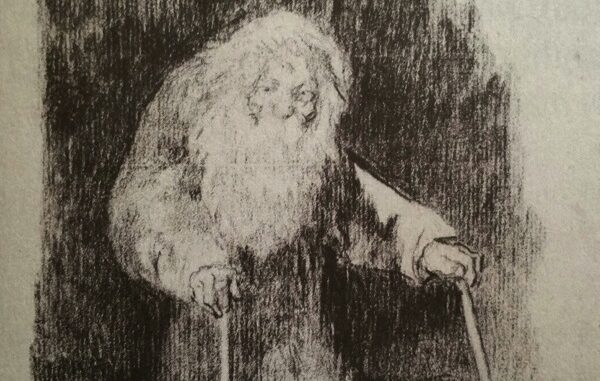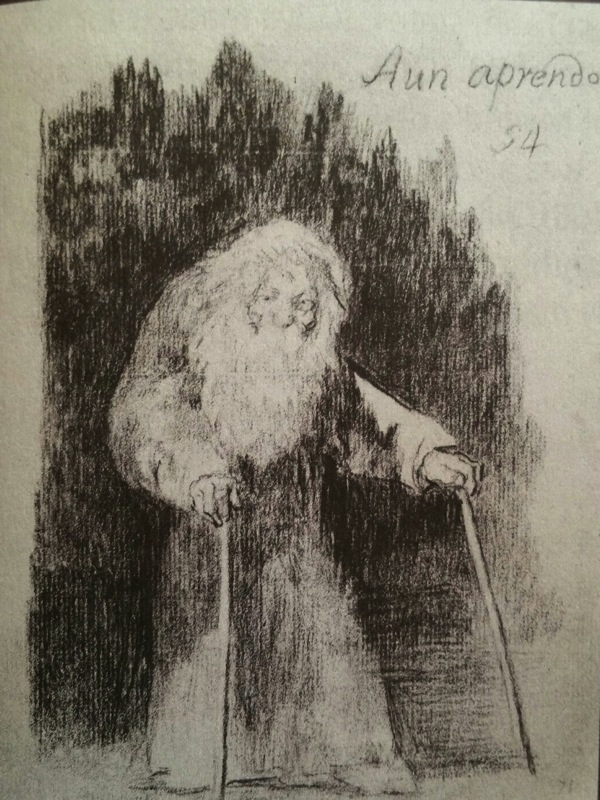
Goya’s final portrait is a sketch in black crayon of an old man, inscribed ‘Aun aprendo’ (I am still learning). This simple portrait and its words capture the essence of the rest of the exhibition and Goya, the artist.

Aun aprendo 1824-8, Goya
The chronological Goya – The Portraits exhibition at the National Gallery displays 18th and 19th century paintings of royalty and aristocrats. Goya’s personal links to the Spanish royal family exposed him to their intimate and personal lives which he gently reveals while maintaining a formal and skilled portrayal of his subjects. Goya uses a minimal basic palate of bold colours for the majority of these paintings and for the main areas within these works. In The Count of Altamira, 1787, red, blue and yellow dominate and the inclusion of black produces a striking effect.
Like many artists, Goya is not afraid of a self-portrait and you don’t have to look very far to decipher his figure in some of his commissions either. In the first room you will glimpse his character as he ambitiously holds up a canvas in The Count of Floridablanca, 1783.
If briefly skimming this exhibition you will see paintings of the rich and privileged what may run through your head is,’Yep, seen this before.’ But take the time to observe the blurred edges and textured blobs, dots and drags of paint on gold trim and medals in contrast to the impeccably painted velvet; notice the detail and the skill at creating a mass of frizzy hair or delicate downy wisps in The Countess of Altamira with her Daughter Maria Agustina, 1787-8. It is not just Goya’s technical skill but his clear love of his craft. His delight in colour and texture ooze from the canvas with his bold, lose marks and impasto paint.
Goya paints a smirking Asensio Julia in a portrait of the same name (1798) and portrays Juan in Juan de Villanueva, 1800-5, mid-speech, less than physically flatteringly but with an essence of warmth. This is not only an insight into the real person behind the painting but an insight into Goya’s ability to see, understand and express, in paint, these qualities. He has the skill to capture the tiniest twinkle in an eye or up-turn of a lip and make us see too. In these works we’re exposed to Goya’s enjoyment of people.
The last rooms are gloomier in tone and, in some way, emotion. Goya’s private family portraits include 6 oil on copper miniatures he made for his only surviving child, Javier’s wedding. We’re also exposed to honest portraits of his wife and of course, himself. His Self Portrait with Doctor Arrieta, 1820, is probably the darkest in the whole exhibition as we are presented with a large canvas of an extremely ill Goya and his doctor. This portrait includes an inscription thanking his doctor and friend for saving his life.
This is a well curated and fascinating exhibition and one of those biggies you shouldn’t miss.
7th Oct 15 – 10th Jan 16
For more information visit www.nationalgallery.org.uk
By Helen Shewry

Leave a Reply